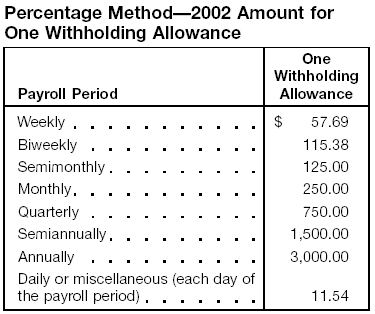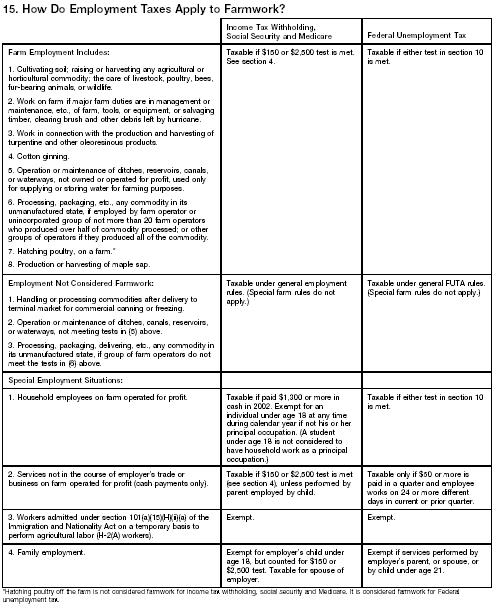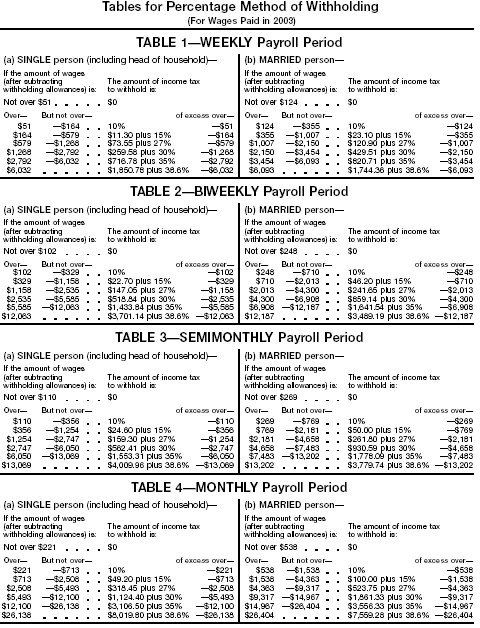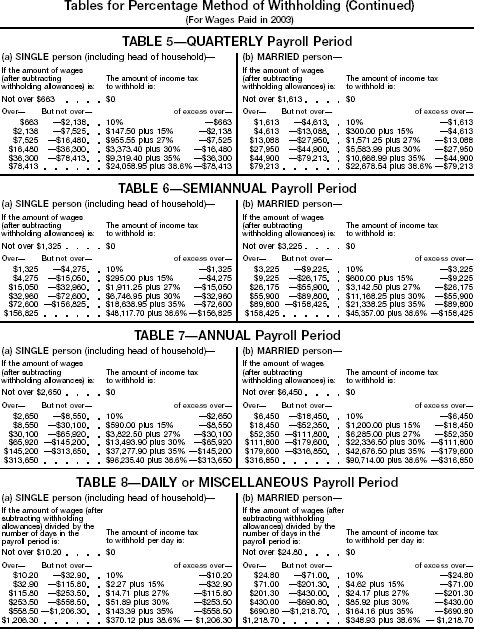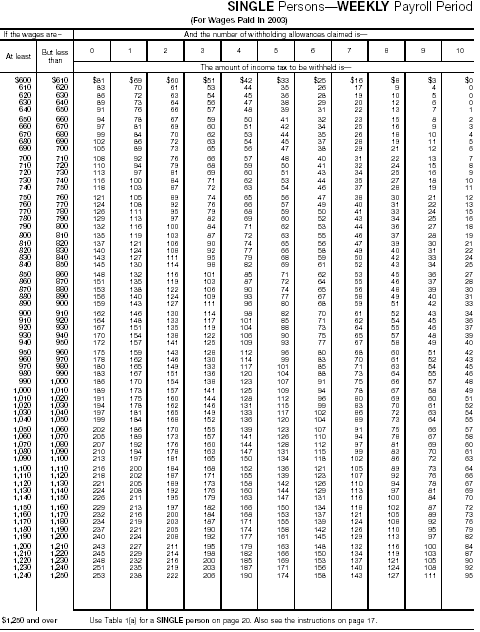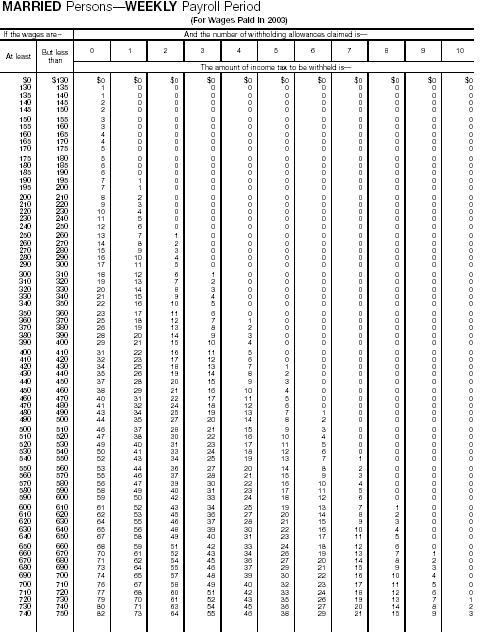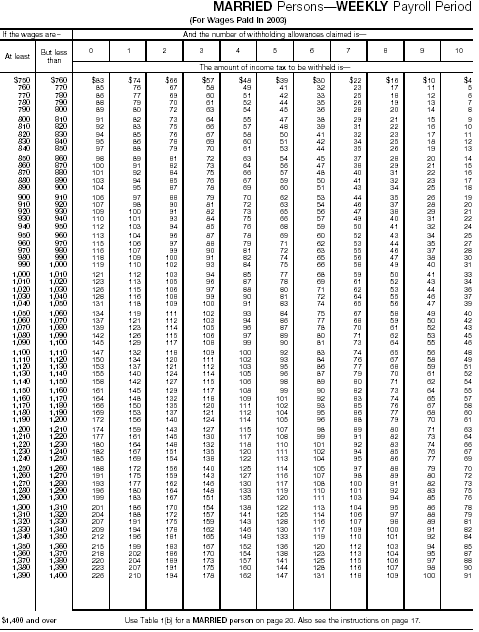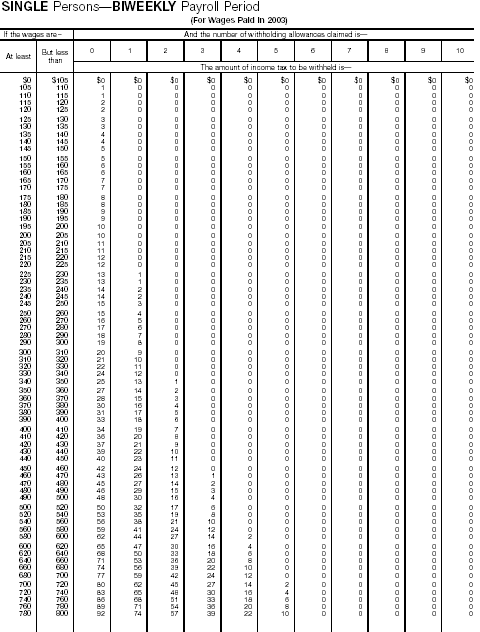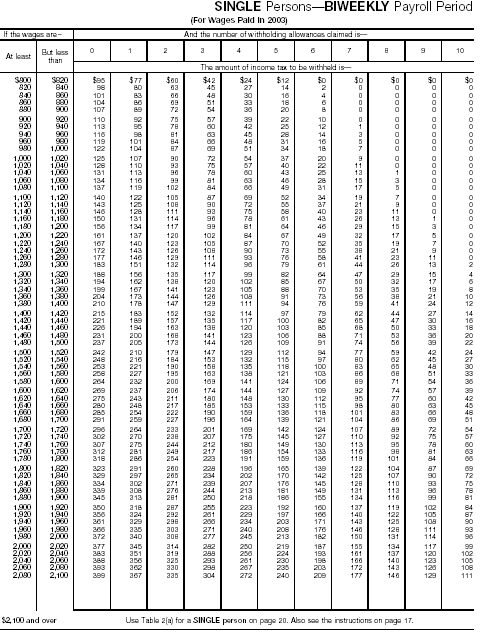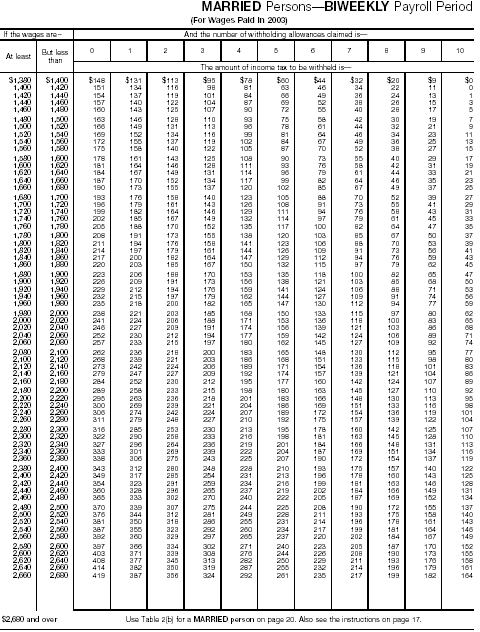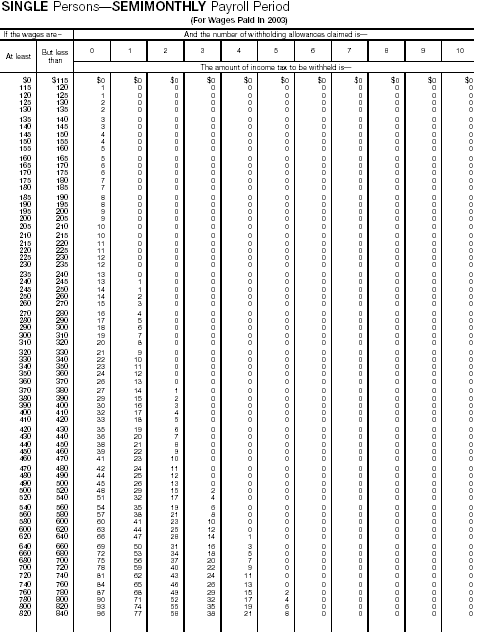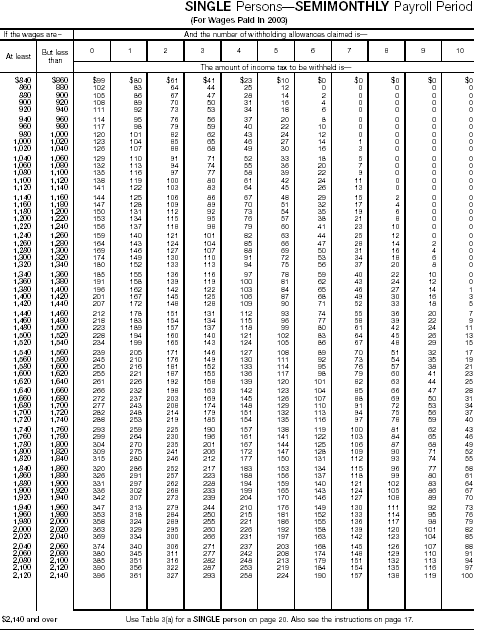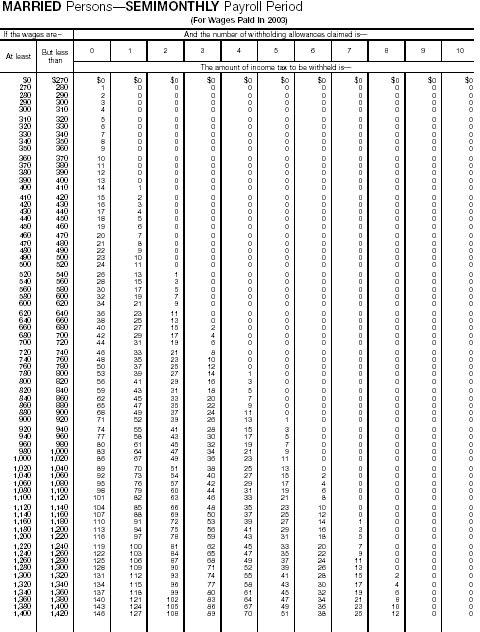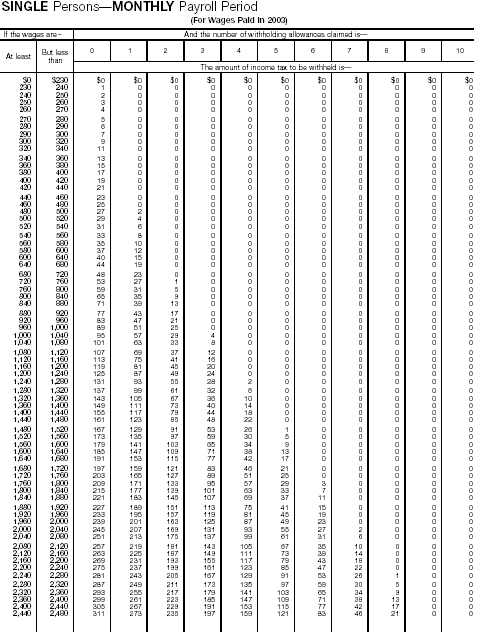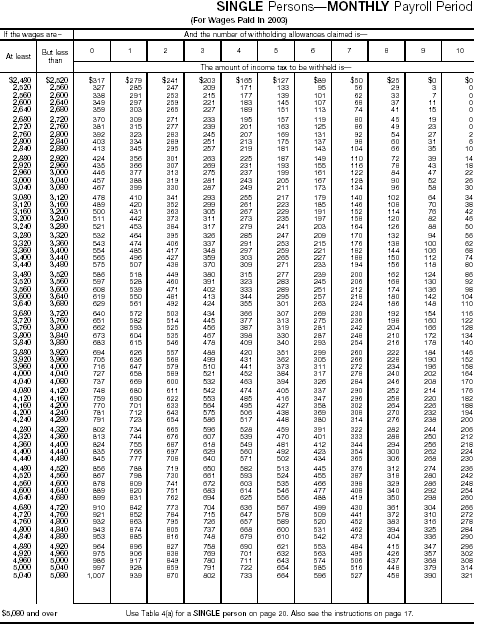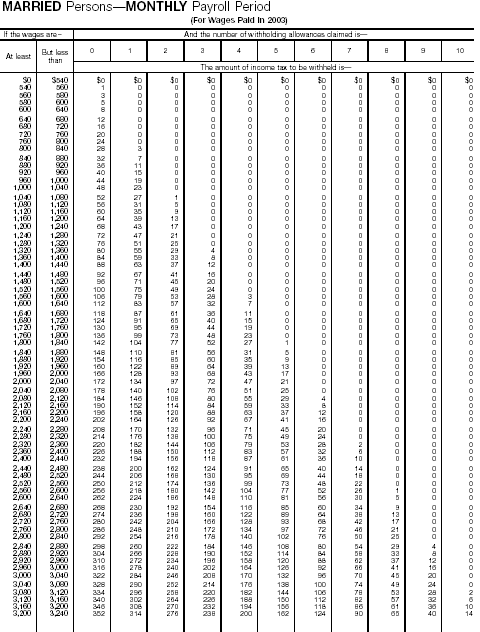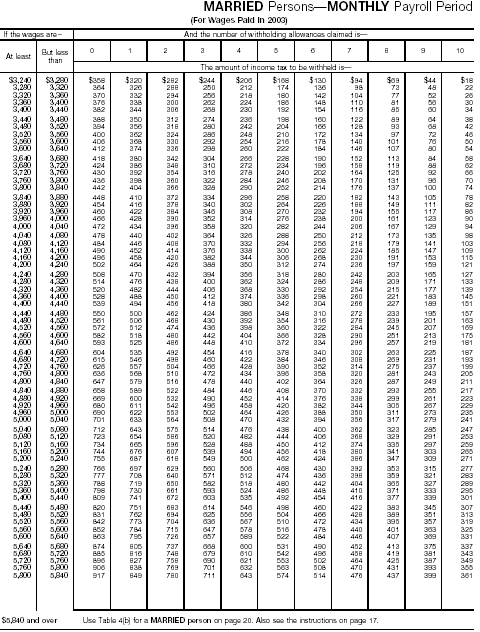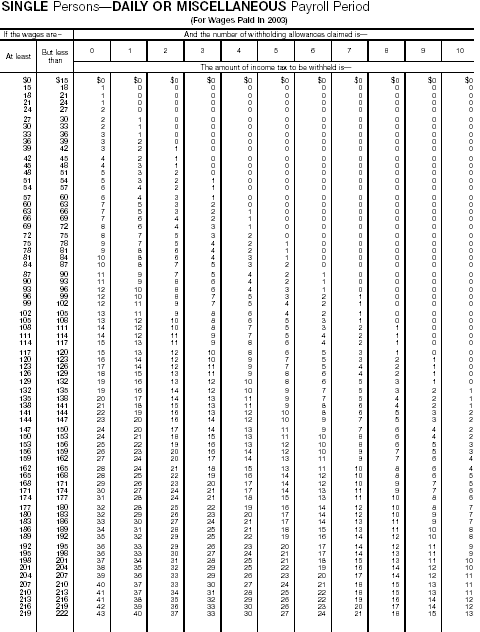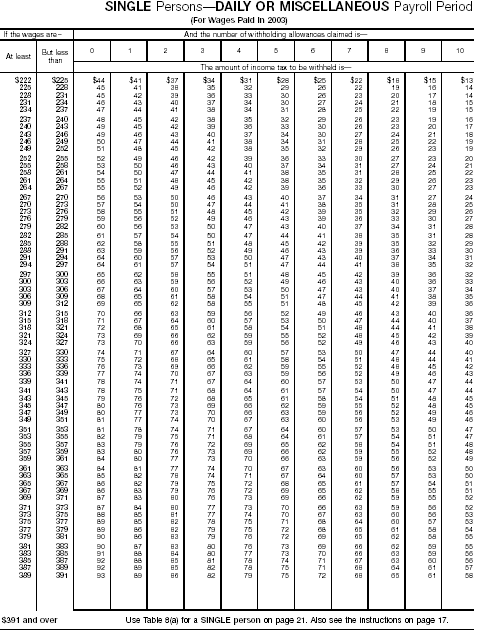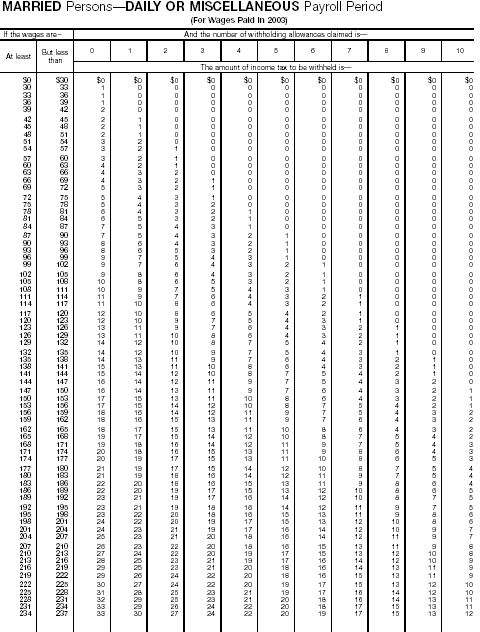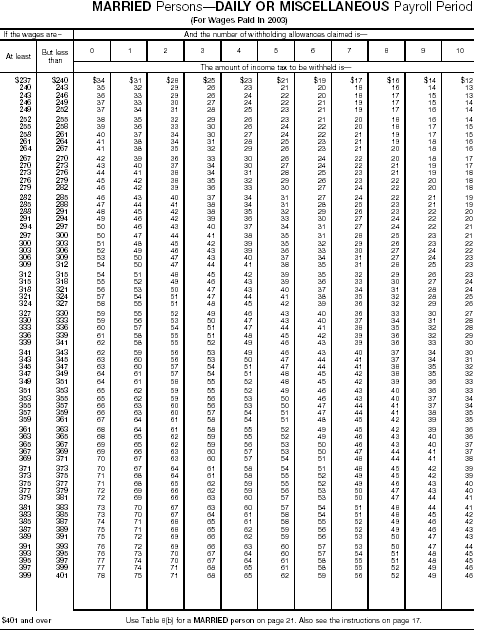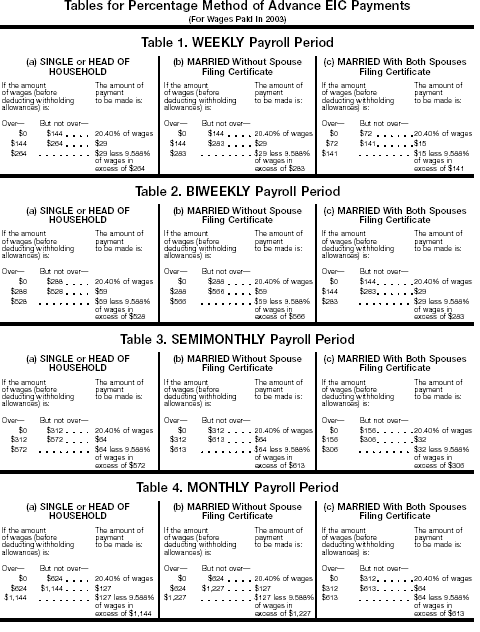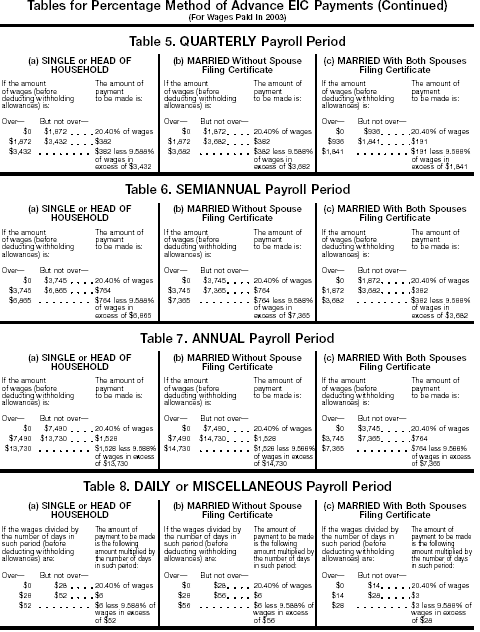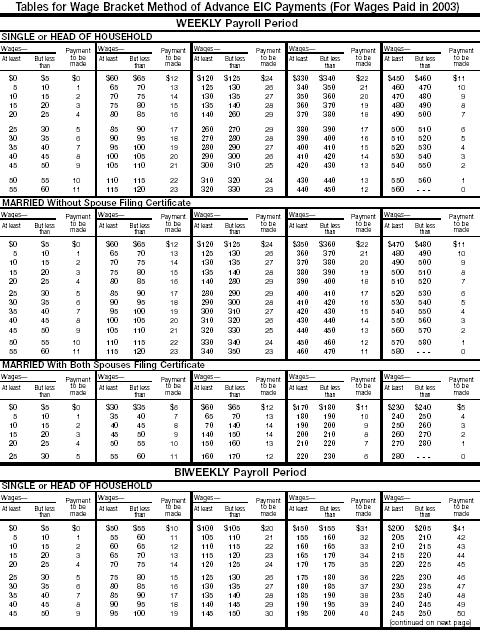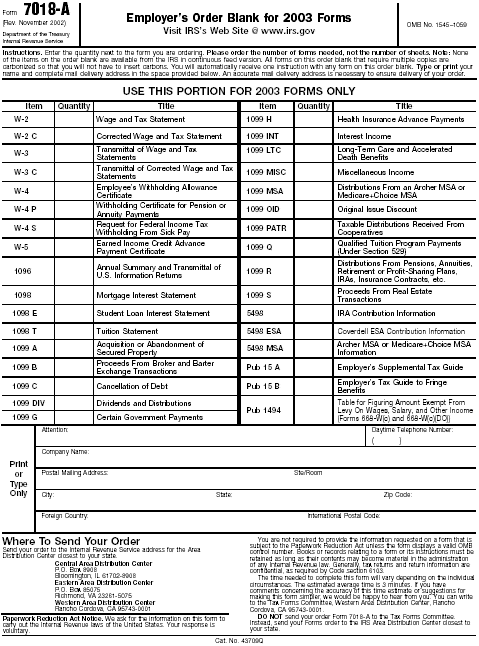 |
2002 Tax Help Archives |
Order in which deposits are applied. Beginning in 2002, deposits generally are applied to the most recent tax liability within the year. Before 2002, deposits generally were applied first to the oldest liability. For examples on how the IRS will apply deposits, see Rev. Proc. 2001-58 (2001-50 I.R.B. 579). However, if you receive a failure-to-deposit penalty notice, you may designate how your payment is to be applied in order to minimize the amount of the penalty. Follow the instructions on the penalty notice you receive. For more information on designating deposits, see Rev. Proc. 99-10, 1999-1 C.B. 272. You can find Rev. Proc. 99-10 on page 11 of Internal Revenue Bulletin 1999-2 at www.irs.gov. Example: Cedar Inc. is required to make a deposit of $1,000 on April 15 and $1,500 on May 15. It does not make the deposit on April 15. On May 15, Cedar Inc. deposits $2,000. Under the new rule, which applies deposits to the most recent tax liability, $1,500 of the deposit is applied to the May 15 deposit and the remaining $500 is applied to the April deposit. Accordingly, $500 of the April 15 liability remains undeposited. The penalty on this underdeposit will apply as explained above. Trust fund recovery penalty. If income, social security, and Medicare taxes that must be withheld are not withheld or are not deposited or paid to the United States Treasury, the trust fund recovery penalty may apply. The penalty is the full amount of the unpaid trust fund tax. This penalty may apply to you if these unpaid taxes cannot be immediately collected from the employer or business. The trust fund recovery penalty may be imposed on all persons who are determined by the IRS to be responsible for collecting, accounting for, and paying over these taxes, and who acted willfully in not doing so. A responsible person can be an officer or employee of a corporation, a partner or employee of a partnership, an accountant, a volunteer director/trustee, or an employee of a sole proprietorship. A responsible person also may include one who signs checks for the business or otherwise has authority to cause the spending of business funds. Willfully means voluntarily, consciously, and intentionally. A responsible person acts willfully if the person knows the required actions are not taking place. Employers of Both Farm and Nonfarm Workers If you employ both farm and nonfarm workers, you must treat employment taxes for the farmworkers (Form 943 taxes) separately from employment taxes for the nonfarm workers (Form 941 taxes). Form 943 taxes and Form 941 taxes are not combined for purposes of applying any of the deposit schedule rules. If a deposit is due, deposit the Form 941 taxes and the Form 943 taxes with separate FTD coupons, or by making separate EFTPS deposits. For example, if you are a monthly schedule depositor for both Forms 941 and 943 taxes and your tax liability at the end of April is $1,500 reportable on Form 941 and $1,200 reportable on Form 943, deposit both amounts by May 15. Use one FTD coupon to deposit the $1,500 of Form 941 taxes and another FTD coupon to deposit the $1,200 of Form 943 taxes. 8. Form 943 You must file Form 943 for each calendar year beginning with the first year you pay $2,500 or more for farmwork or you employ a farmworker who meets the $150 test explained in section 4. Do not report these wages on Form 941. After you file your first return, each year the IRS will send you a Form 943 preaddressed with your name, address, and EIN. If you do not receive the preaddressed form, request a blank form from the IRS. If you use a blank form, show your name and EIN exactly as they appeared on previous returns. Household employees. If you file Form 943 and pay wages to household workers who work on your for-profit farm, you may include the wages and taxes of these workers on Form 943. If you choose not to report these wages and taxes on Form 943, or if your household worker does not work on your for-profit farm, report the wages of these workers separately on Schedule H (Form 1040), Household Employment Taxes. If you report the wages on Form 943, include the taxes when you figure deposit requirements or make deposits. If you include household employee wages and taxes on Schedule H (Form 1040), do not include the household employee taxes when you figure deposit requirements or make Form 943 deposits. See Pub. 926, Household Employer's Tax Guide, for more information about household workers. Penalties. For each month or part of a month a return is not filed when required (disregarding any extensions of the filing deadline), there is a penalty of 5% of the unpaid tax due with that return. The maximum penalty is 25% of the tax due. Also, for each month or part of a month the tax is paid late (disregarding any extensions of the payment deadline), a penalty of 0.5% of the amount of unpaid tax may apply. The maximum amount of this penalty is also 25% of the tax due. The penalties will not be charged if you have reasonable cause for failing to file or pay. If you file or pay late, attach an explanation to your Form 943. In addition, interest accrues from the due date of the tax on any unpaid balance. If income, social security, and Medicare taxes that must be withheld are not withheld or are not paid, you may be personally liable for the trust fund recovery penalty. See section 7. 9. Adjustments on Form 943 There are two types of adjustments: current year adjustments and prior year adjustments. See the instructions for Form 943 for more information on how to report these adjustments. Current Year Adjustments In certain cases, amounts reported as social security and Medicare taxes on lines 3 and 5 of Form 943 must be adjusted to arrive at your correct tax liability. The most common situation involves differences in cents totals due to rounding. Other situations when current year adjustments may be necessary include third-party sick pay, group-term life insurance for former employees, and the uncollected employee share of tax on tips. See Circular E for more information on these adjustments. If you withhold an incorrect amount of income tax from an employee, you may adjust the amount withheld in later pay periods during the same year to compensate for the error. Prior Year Adjustments Generally, you can correct social security and Medicare errors on prior year Forms 943 by making an adjustment on the Form 943 for the year during which the error is discovered. The adjustment increases or decreases your tax liability for the year in which it is reported (the year the error is discovered) and is interest free. The net adjustments reported on Form 943 may include any number of corrections for one or more previous years, including both overpayments and underpayments. You are required to provide background information and certifications supporting prior year adjustments. File with Form 943 a Form 941c, Supporting Statement To Correct Information, or attach a statement that shows all of the following:
Do not file Form 941c or the written statement separately. The IRS will not be able to process your adjustments without this supporting information. See the instructions for Form 941c for more information. Income tax withholding adjustments. You cannot adjust the amount reported as income tax withheld for a prior year return, even if you withheld the wrong amount. However, you may adjust prior year income tax withholding to correct an administrative error. An administrative error occurs if the amount you entered on Form 943 is not the amount you actually withheld. Examples include mathematical or transposition errors. In these cases, you should adjust the return to show the amount actually withheld. The administrative error adjustment corrects only the amount reported on Form 943 to agree with the actual amount withheld from wages in that year. You may also need to correct Forms W-2 for the prior year if they do not show the actual withholding by filing Form W-2c, Corrected Wage and Tax Statement, and Form W-3c, Transmittal of Corrected Wage and Tax Statements. Social security and Medicare tax adjustments. Correct prior year social security and Medicare tax errors by making an adjustment on line 8 of Form 943 for the year during which the error was discovered. If you withheld no tax or less than the correct amount, you may correct the mistake by withholding the tax from a later payment to the same employee. If you withheld employee tax when no tax is due or if you withheld more than the correct amount, you should repay the employee. Filing a claim for overreported prior year liabilities. If you discover an error on a prior year return resulting in a tax overpayment, you may file Form 843, Claim for Refund and Request for Abatement, for a refund. This form also can be used to request an abatement of an overassessment of employment taxes, interest, and/or penalties. You must file Form 941c, or an equivalent statement, with Form 843. See the separate Instructions for Form 843. Note: For purposes of filing Form 843, a timely filed Form 943 is considered to be filed on April 15 of the year after the close of the tax year. Generally, a claim may be filed within 3 years from that date. Refunding amounts incorrectly withheld from employees. If you withheld more than the right amount of income, social security, or Medicare taxes from wages paid, give the employee the excess. Any excess income tax withholding must be reimbursed to the employee prior to the end of the calendar year. Keep in your records the employee's written receipt showing the date and amount of the repayment. If you do not have a receipt, you must report and pay each excess amount when you file Form 943 for the year in which you withheld too much tax. Filing corrections to Form W-2 and W-3 statements. When adjustments are made to correct social security and Medicare taxes because of a change in the wage totals reported for a previous year, you also may need to file Forms W-2c and Form W-3c. 10. Federal Unemployment (FUTA) Tax The Federal Unemployment Tax Act (FUTA), with state unemployment systems, provides for payments of unemployment compensation to workers who have lost their jobs. Most employers pay both a Federal and a state unemployment tax. Only the employer pays FUTA tax; it is not deducted from the employees' wages. For information, see the Instructions for Form 940. For 2001, you must file Form 940 or 940-EZ, Employer's Annual Federal Unemployment (FUTA) Tax Return, if you:
To determine whether you meet either test above, you must count wages paid to aliens admitted on a temporary basis to the United States to perform farmwork, also known as H-2(A) visa workers. However, wages paid to H-2(A) workers are not subject to the FUTA tax. Generally, farmworkers supplied by a crew leader are considered employees of the farm operator for purposes of the FUTA tax unless (1) the crew leader is registered under the Migrant and Seasonal Agricultural Worker Protection Act or (2) substantially all the workers supplied by the crew leader operate or maintain tractors, harvesting or cropdusting machines, or other machines provided by the crew leader. Therefore, if (1) or (2) applies, the farmworkers are generally employees of the crew leader. You must deposit FUTA tax with an authorized financial institution. (If you are subject to the electronic deposit requirements, you must use the EFTPS system. See section 7.) The deposit rules for FUTA tax are different from those for income, social security, and Medicare taxes. See Deposit rules for FUTA tax below. FUTA tax rate. For 2001 and 2002, the FUTA tax rate is 6.2% on the first $7,000 of cash wages you pay each employee. You may receive a credit of up to 5.4% of FUTA wages for the state unemployment tax you pay. If your state tax rate (experience rate) is less than 5.4%, you are still allowed the full 5.4% credit. Therefore, your net FUTA tax rate may be as low as 0.8% (.008). FUTA tax applies, however, even if you are exempt from state unemployment tax or your employees are ineligible for unemployment compensation benefits. Forms 940 and 940-EZ take state credits into account. Note: If you have acquired a business from someone else, you may be able to claim a special credit as a successor employer. See the Instructions for Form 940. Deposit rules for FUTA tax. Generally, deposit FUTA tax quarterly. To figure your FUTA tax, multiply .008 times the amount of wages paid to each employee during the quarter. When an employee's wages reach $7,000, do not figure any additional FUTA tax for that employee. If the FUTA tax for the quarter (plus any undeposited FUTA tax from prior quarters) is more than $100, deposit the FUTA tax with an authorized financial institution, or by using EFTPS, explained in section 7, by the last day of the month following the close of the quarter. If the amount is $100 or less, you do not have to deposit it, but you must add it to the amount subject to deposit for the next quarter. To help ensure proper crediting to your account, write your employer identification number, Form 940, and the tax period the deposit applies to on your check or money order. If the FUTA tax reported on Form 940 or 940-EZ minus the amounts deposited for the first three quarters is more than $100, deposit the whole amount by January 31. If the tax (minus any deposits) is $100 or less, you may either deposit the tax or pay it with the return by January 31. Form 940 or 940-EZ. By January 31, file Form 940 or 940-EZ. If you make deposits on time in full payment of the tax due for the year, you have ten additional days to file. Form 940-EZ is a simpler version of Form 940. You can generally use Form 940-EZ if:
If you do not meet these conditions, file Form 940 instead. Once you have filed a Form 940 or 940-EZ, you will receive a preaddressed form near the end of each calendar year. If you do not receive a form, request one by calling 1-800-TAX-FORM in time to receive it and file when due. 11. Records You Should Keep Every employer subject to employment taxes must keep all related records available for inspection for at least 4 years after the due date for the return period to which the records relate, or the date the taxes are paid, whichever is later. You may keep the records in whatever form you choose. Keep a record of:
Keep copies of:
If a crew leader furnished you with farmworkers, you must keep a record of the name, permanent mailing address, and EIN of the crew leader. If the crew leader has no permanent mailing address, record his or her present address. 12. Reconciling Wage Reporting Forms When there are discrepancies between amounts reported on Form 943 filed with the IRS and Forms W-2 and W-3 filed with the SSA, the IRS must contact you to resolve the discrepancies. This costs time and money for the Government and for you. To help reduce discrepancies -
To reduce the discrepancies between amounts reported on Forms W-2, W-3, and 943:
Amounts reported on Forms W-2, W-3, and 943 may not match for valid reasons. If they do not match, you should determine that the reasons are valid. Keep your reconciliation so you will have a record of why amounts did not match in case there are inquiries from the IRS or the SSA. 13. Income Tax Withholding Methods There are several methods to figure the income tax withholding for employees. The most common are the wage bracket method and the percentage method. Wage Bracket Method Under the wage bracket method, find the proper table (on pages 22 through 41) for your payroll period and the employee's marital status as shown on his or her Form W-4. Then, based on the number of withholding allowances claimed on the Form W-4 and the amount of wages, find the amount of tax to withhold. If your employee is claiming more than 10 withholding allowances, see below. Note: If you cannot use the wage bracket tables because wages exceed the amount shown in the last bracket of the table, use the percentage method of withholding described below. Be sure to reduce wages by the amount of total withholding allowances (shown in the table on this page) before using the percentage method tables on pages 20 and 21. Adjusting for employees claiming over 10 withholding allowances. To adapt the wage bracket tables for employees who are claiming over 10 allowances:
This is a voluntary method. If you use the wage bracket tables, you may continue to withhold the amount in the 10 column when your employee has more than 10 allowances, using the method above. You can also use the other methods described below. Percentage Method If you do not want to use the wage bracket tables on pages 22 through 41 to figure how much income tax to withhold, you can use the percentage method based on the table on this page and the appropriate rate table. This method works for any number of withholding allowances the employee claims and any amount of wages. Use these steps to figure the income tax to withhold under the percentage method:
1999 percentage method table Example. An unmarried employee is paid $600 weekly. This employee has a Form W-4 in effect claiming two withholding allowances. Using the percentage method, figure the income tax withholding as follows:
To figure the income tax to withhold, you may reduce the last digit of the wages to zero, or figure the wages to the nearest dollar. Annual income tax withholding. Figure the income tax to withhold on annual wages under the Percentage Method for an annual payroll period. Then prorate the tax back to the payroll period. Example. A married person claims four withholding allowances. She is paid $1,000 a week. Multiply the weekly wages by 52 weeks to figure the annual wage of $52,000. Subtract $12,000 (the value of four withholding allowances annually) for a balance of $40,000. Using Table 7 - Annual Payroll Period, the annual withholding is $4,432.50. Divide the annual amount by 52. The weekly withholding is $85.24. Alternative Methods of Income Tax Withholding Rather than the Percentage or Wage Bracket Methods described above, you can use an alternative method to withhold income tax. Pub. 15-A, Employer's Supplemental Tax Guide, describes these alternative methods. Rounding. If you use the percentage method or alternative methods for income tax withholding, you may round the tax for the pay period to the nearest dollar. The wage bracket tables are already rounded for you. If rounding is used, it must be used consistently. Round withheld tax amounts to the nearest whole dollar by (1) dropping amounts under 50 cents and (2) increasing amounts from 50 to 99 cents to the next higher dollar. For example, $2.30 becomes $2, and $2.80 becomes $3. 14. Advance Earned Income Credit (EIC) Payment Methods To figure the advance EIC payment, you may use either the Wage Bracket Method or the Percentage Method explained below. With either method, the number of withholding allowances an employee claims on Form W-4 is not used in figuring the advance EIC payment. Nor does it matter that the employee has claimed exemption from income tax withholding on Form W-4. See section 6 for an explanation of the advance EIC. Wage Bracket Method If you use the wage bracket tables on pages 44 through 45, figure the advance EIC payment as follows. Find the employee's gross wages before any deductions using the appropriate table. There are different tables for (a) single or head of household, (b) married without spouse filing certificate, or (c) married with both spouses filing certificates. Find the amount of the advance EIC payment shown in the appropriate table for the amount of wages paid. Percentage Method If you do not want to use the wage bracket tables to figure how much to include in an employee's wages for the advance EIC payment, you can use the percentage computation based on the appropriate rate table. Find the employee's gross wages before any deductions in the appropriate table on pages 42 through 43. There are different tables for (a) single or head of household, (b) married without spouse filing certificate, or (c) married with both spouses filing certificates. Find the amount of the advance EIC payment shown in the appropriate table for the amount of wages paid. Rounding. The wage bracket tables for advance EIC payments have been rounded to whole dollar amounts. If you use the percentage method for advance EIC payments, the payments may be rounded to the nearest dollar. The rules for rounding discussed in section 13 apply to advance EIC payments. How Do Employment Taxes Apply to Farmwork? wh01 wh02 wh03 wh04 wh05 wh06 wh07 wh08 wh09 wh10 wh11 wh12 wh13 wh14 wh15 wh16 wh17 wh18 wh19 wh20 wh21 wh22 wh24 wh25 wh26 wh27 7018A Access Publication Index | 2002 Tax Help Archives | Tax Help Archives | Home © 2004, UncleFed.com
|
||||||||||||||||||||||||||||||||||||||||||||||
